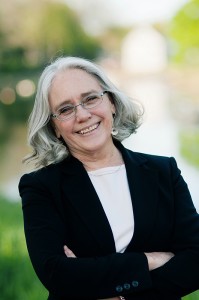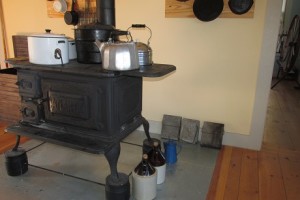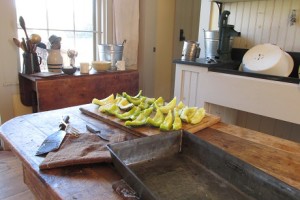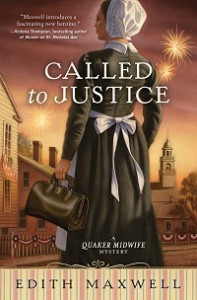 Relevant History welcomes back best-selling historical mystery author Edith Maxwell, a 2017 double Agatha Award nominee for her historical mystery Delivering the Truth and her short story, “The Mayor and the Midwife.” She writes the Quaker Midwife Mysteries and the Local Foods Mysteries; as Maddie Day she writes the Country Store Mysteries and the Cozy Capers Book Group Mysteries. Her award-winning short crime fiction has appeared in many juried anthologies, and she is honored to serve as President of Sisters in Crime New England. A former doula, Maxwell lives north of Boston with her beau and three cats. For more information about her and her books, visit her web site and group blog, and follow her on Facebook, Twitter, Pinterest, and Instagram.
Relevant History welcomes back best-selling historical mystery author Edith Maxwell, a 2017 double Agatha Award nominee for her historical mystery Delivering the Truth and her short story, “The Mayor and the Midwife.” She writes the Quaker Midwife Mysteries and the Local Foods Mysteries; as Maddie Day she writes the Country Store Mysteries and the Cozy Capers Book Group Mysteries. Her award-winning short crime fiction has appeared in many juried anthologies, and she is honored to serve as President of Sisters in Crime New England. A former doula, Maxwell lives north of Boston with her beau and three cats. For more information about her and her books, visit her web site and group blog, and follow her on Facebook, Twitter, Pinterest, and Instagram.
*****
[Note: A version of this post first appeared on Storybook Reviews.]
My Quaker Midwife Mysteries take place in a bustling New England mill and carriage factory town in the late 1880s–which happens to be the town I live in. The family my midwife Rose Carroll lives with resides in my house, or the way my house was when it was brand-new and built for workers who toiled in the textile mill a block down the hill. By now it has had two additions to the back, but the heart of the home remains.
 We bought this house five years ago, and my boyfriend has renovated the entire structure, right down to the studs. We now have new plumbing, new wiring, insulation, smooth walls and ceilings, but we kept the original wide pine floors and the window and door trim. We’ve tried to keep the additions reminiscent of the period when the house was built, so the kitchen has old-timey looking subway tiles for backsplash, as does the bathroom.
We bought this house five years ago, and my boyfriend has renovated the entire structure, right down to the studs. We now have new plumbing, new wiring, insulation, smooth walls and ceilings, but we kept the original wide pine floors and the window and door trim. We’ve tried to keep the additions reminiscent of the period when the house was built, so the kitchen has old-timey looking subway tiles for backsplash, as does the bathroom.
 We opened up the kitchen to the sitting room, and I love to perch on the couch and gaze into the kitchen, imagining Rose and her teenage niece Faith cooking and cleaning for the family. But what would it have looked like back then? This is a modest three-bedroom house, not a big fancy Victorian with maid’s quarters and a deluxe dining room.
We opened up the kitchen to the sitting room, and I love to perch on the couch and gaze into the kitchen, imagining Rose and her teenage niece Faith cooking and cleaning for the family. But what would it have looked like back then? This is a modest three-bedroom house, not a big fancy Victorian with maid’s quarters and a deluxe dining room.
I have visited several museum homes of the period. One was Orchard House, where the Alcott family lived. It’s only an hour from my home. I also stayed at a living history farmhouse in Maine where the public is invited for 24-hour live-in experiences. The Norlands-Washburn center features late nineteen-century life, from the wood cookstove to the chamberpot under the bed! And I often peruse Miss Parloa’s New Cook Book and Marketing Guide, where she speaks extensively of what a “hygienic” kitchen needs.
 Rose’s kitchen would have had a wide soapstone sink and running water from a pump. The wide wooden table would have been used for food preparation as well as eating meals, and the cabinet space would have been limited. They might have had gas lighting on the walls, but not yet a gas stove. Certain places in town were starting to be electrified, but definitely not Rose’s home. Refrigeration would have been an icebox. The door to the outside was fitted with a screen door, a new invention that did wonders for keeping the bugs out but letting a breeze circulate in a hot July when Called to Justice takes place.
Rose’s kitchen would have had a wide soapstone sink and running water from a pump. The wide wooden table would have been used for food preparation as well as eating meals, and the cabinet space would have been limited. They might have had gas lighting on the walls, but not yet a gas stove. Certain places in town were starting to be electrified, but definitely not Rose’s home. Refrigeration would have been an icebox. The door to the outside was fitted with a screen door, a new invention that did wonders for keeping the bugs out but letting a breeze circulate in a hot July when Called to Justice takes place.
The family did hire out the washing, and by Book Three in the series (Turning the Tide, 2018) Rose has convinced her widower brother-in-law to hire a kitchen girl, too. Rose has a busy midwifery practice, and Faith works full time in the Hamilton Mills, and Rose argued that it wasn’t fair to either of them to have to do all the housework, too.
I also often think of the Laura Ingalls Wilder series, which I read several times as a child. Those stories take place primarily on the prairie and the frontier, certainly, but many of the everyday household tasks would have been the same.
Readers: Do you have any fabulous late Victorian research sources? Knowledge of everyday life from back then? Please share!
*****
 A big thanks to Edith Maxwell. She’ll give away a paperback copy of her Fourth of July mystery, Called to Justice, to someone who contributes a comment on my blog this week. (Here’s a good review of the book.) I’ll choose the winner from among those who comment by Friday at 6 p.m. ET. Delivery is available worldwide.
A big thanks to Edith Maxwell. She’ll give away a paperback copy of her Fourth of July mystery, Called to Justice, to someone who contributes a comment on my blog this week. (Here’s a good review of the book.) I’ll choose the winner from among those who comment by Friday at 6 p.m. ET. Delivery is available worldwide.
**********
Did you like what you read? Learn about downloads, discounts, and special offers from Relevant History authors and Suzanne Adair. Subscribe to Suzanne’s free newsletter.

I have a very clear picture of the houses of all your protagonists. The spaces are all very different, but all are old. It has to be an accomplished author who allows the reader a peak into the private places of the fictional people who seem so alive to us. Thanks.
Thank you so much, KB!
We all seem to take for granted the luxuries of modern times. It’s through reading books – fiction where the author has done the research and shown an accurate showing and nonfiction like that help us realize how far we have come and how fortunate we really are.
I loved the snippet about the My Quaker Midwife Mysteries and appreciate the dedication to detail. It’s like stepping through the pages to live a part of history.
Thanks for the chance to win a copy of Called to Justice.
We are indeed fortunate, Kay.
I enjoyed Delivering the Truth and am looking forward to Called to Justice. I live in Saugus (home of the Saugus Ironworks National Park) and love reading historical mysteries set in the greater Boston area.
The Ironworks has been on my list to visit for a while!
Edith, your house is beautiful and so special because you and Hugh did so much of the restoration work on it. I never realized what an important invention a screen door would be for a kitchen. I really appreciate all the research you did for your Quaker Midwife books, down to the smallest detail — you really do transport your reader back to the 1880’s.
Thanks so much, Celia!
Wow, very descriptive, Edith. You’ve obviously done your homework (ok, pun intended)! Hope all is well with you. Looking forward to catching up on Called to Justice.
I try, Jim!
WOW! Living in the house where your stories take place! That give ‘research’ a completely new meaning.
Getting the everyday life details right is so difficult, I suppose living in a place that really saw that kind of life gives a lot of perspective to what your characters experience.
Thanks so much for sharing this. And I envy you a little: the house looks beautiful
Thank you. It is wonderful to be in the middle of historical places.
Interesting post. I love historical fiction. It’s fascinating all the research you do to get it accurate.
Thanks. I love the research!
One of the things I enjoyed most about Delivering the Truth was how you, Edith, brought Rose’s world of the late 1880s to life for me. Your attention to detail is so appreciated. Can’t wait to read Called to Justice. Rose is a great character.
Aww, thanks so much, Kathy!
well, THIS post was an eye-opener for me! Thank you Suzanne for seducing me via DorothyL to come to the blog today! I had “vaguely” remembered (age does funny things sometimes…) hearing about the Quaker Midwife mysteries, but thought they were set Revolutionary era! Not an interest of mine, well, not much…! -grin- I’m more a between-the-wars sort of gal, BUT other major interest is what I consider “local” books/authors, i.e., New England. So, I’m curious now about Ms Maxwell’s series, ok, but then I saw “Hamilton Mills”, OMG!
My father’s family name is Hamilton, and we’ve lived in or near Boston since 1892. Mum’s family goes back to 1600s and in the Victorian era they had factories in and around Wakefield, Springfield, etc. wow. I think I’d like to “talk” with Ms Maxwell, and read her books too!
Nice to meet you, Abbey! Thanks for your enthusiasm, and I hope you enjoy my stories set north of Boston.
My best Friend in grammar school lived in an 1820’s home that still had most of the original House. The Drawing Room and dancing room were on the second story. The bedrooms were huge and she and her Sister had a bedroom together with the huge windows open on the 2nd floor and I can remember waking up looking at a Robins nest with blue eggs in it on the window sill. I was six. I have always loved history and went into Museum Work because of it. The best sources for me of history are the old journals and diaries.I catalogued a Victorian Doctor’s who had operated on a woman who needed surgery and he had given her what he thought was a temporary fix. She told him it worked for twenty years… I wish I had that Journal it had fascinating stuff in it. Thank you for the chance to read your book.
You’re most welcome, Marilyn. I’m sure you’ve seen so many fascinating original sources in your work.
I love this series and novellas. I’ve never known anyone who was a friend and have enjoyed both the fiction one and the author. So different than what I thought.
I so much appreciate that, Ruth!
Wonderful post, and I love that you’re keeping the spirit of the home with your renovations, Edith. Looking forward to reading your series. Thanks for sharing your beautiful home with us!
Thanks very much, Jenni.
I realky enjoyed the post. I love hearing stories of real people. I have read one book in the series and hope to win this one. Thanks for the chance.
Thanks for the chance to win. I love American History and especially stories of real people..
Have been wanting to get this and am excited about the series. Thanks for the info and review. Makes me want to read it even more.
Hi Edith !
I enjoyed your comments about your house( I would love to live in a house like yours); and especially your comments about how Rose, Faith and the others lived. When I read a book like yours, I love trying to visualize the way the characters are living and I can only do that when the author provides the appropriate information–like the soapstone sink, the large wooden table, the pump for water, the lighting, clothing etc. Rose must have loved the screen door ! Thank you for the interesting stories and historical information ! Needless to say, I would love to win your latest book !